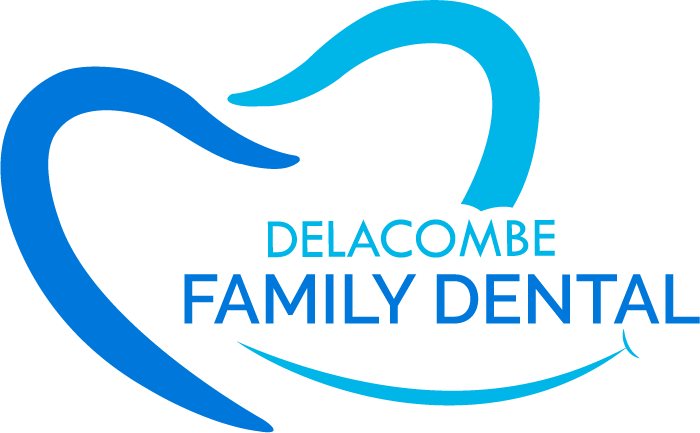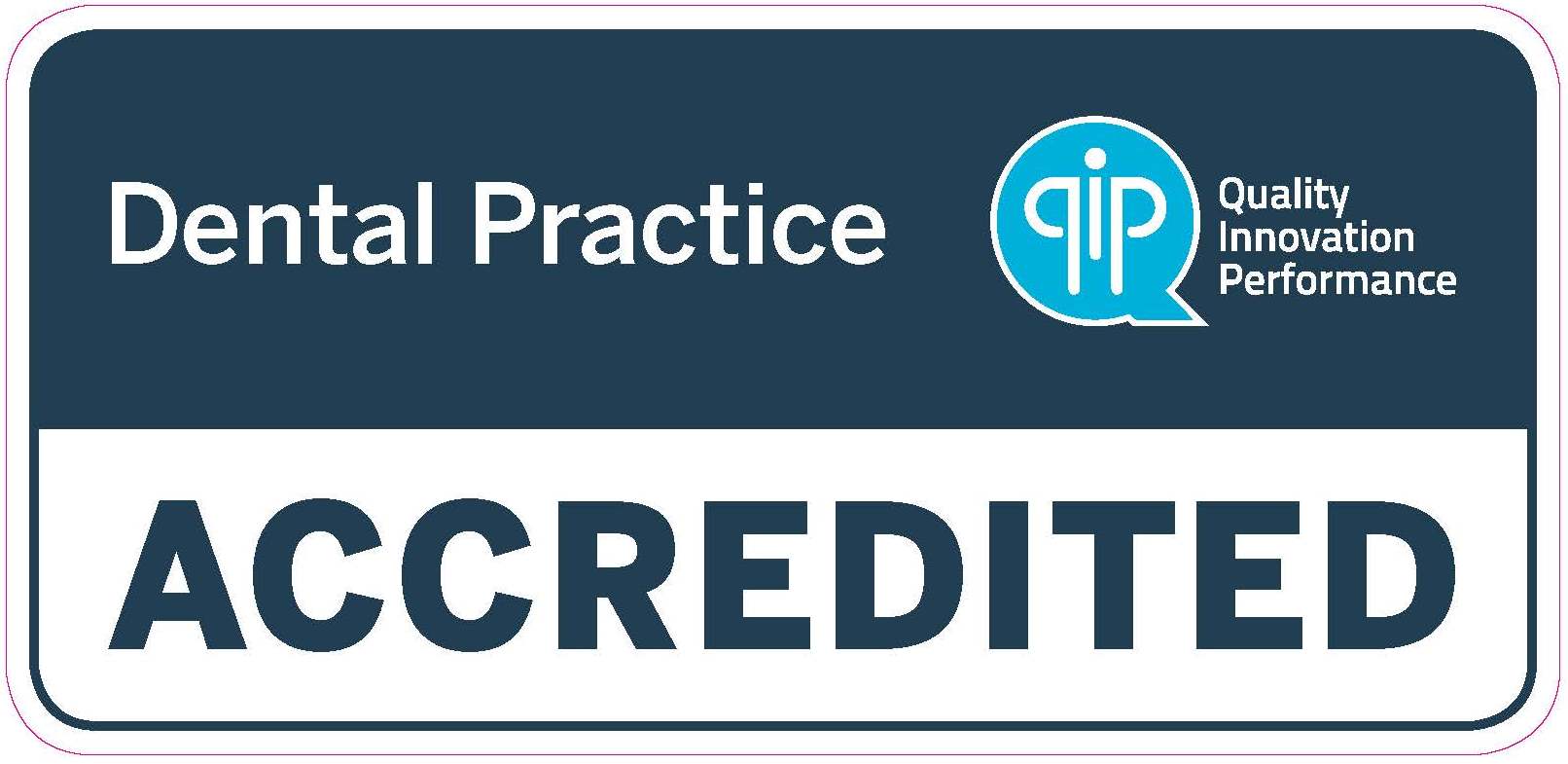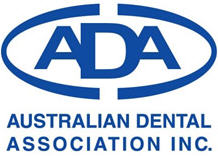When you chip or crack a tooth, one of the first questions that pops into your head is, "How much is this going to set me back?" In Australia, the cracked tooth repair cost can swing wildly, from around $100 for a simple bonding job to upwards of $1,800 for a full dental crown.
The final bill really comes down to how bad the damage is and what your dentist needs to do to get your tooth back in working order.
What to Expect for Your Cracked Tooth Repair Cost

Think of it like a car repair. A minor paint scratch is a quick, cheap fix, but if the engine is shot, you're looking at a much bigger investment. Dental work is no different. The more complex the damage to your tooth, the more involved—and costly—the solution will be.
This guide is here to help you make sense of the financial side of things. We'll break down the costs for the most common treatments so you can walk into your appointment with a clearer picture of what to expect.
A Quick Overview of Potential Costs
To give you an idea right off the bat, let's look at some typical cost ranges. For minor cracks or chips that have only nicked the surface enamel, a simple treatment called dental bonding is often enough, usually starting from about $100 per tooth.
If the crack is more serious and has weakened the tooth's structure, a dental crown is often the best bet. This can cost anywhere from $1,600 to $1,870, depending on where you are. Just like with any professional service, it's helpful to get a feel for the different factors that play into the final price by understanding pricing structures in general.
Key Takeaway: The severity of the crack is the single biggest factor that will determine your final repair cost. Getting a quick diagnosis from your dentist is the only way to get an accurate quote and stop the problem from getting worse (and more expensive!).
To make things easier, here's a quick summary table that gives you a starting point for budgeting your treatment.
Quick Overview of Cracked Tooth Repair Costs
This table provides a snapshot of the estimated cost ranges for common cracked tooth treatments across Australia, helping you anticipate the potential expenses.
| Treatment Type | Typical Cost Range (AUD) | Best For |
|---|---|---|
| Dental Bonding | $100 – $400 | Minor cosmetic chips and cracks on the tooth's surface. |
| Dental Filling | $150 – $450 | Small to moderate cracks that haven't reached the pulp. |
| Dental Crown | $1,600 – $1,870+ | Large cracks that compromise the tooth's structure. |
| Root Canal Therapy | $900 – $3,000+ | Cracks that have extended into the tooth's pulp (nerve). |
| Tooth Extraction | $200 – $600 | Cracks that are too severe to save the tooth. |
Remember, these are just estimates. Your dentist will give you a precise quote after they've had a proper look at the tooth. This at-a-glance overview should tackle your main concern head-on and set a clear roadmap for the more detailed explanations that follow.
Why Repair Costs Vary So Much
Trying to nail down a single, fixed price for a cracked tooth repair is a bit like asking "how much does a car cost?" without mentioning the make or model. The answer depends entirely on the specifics. A minor chip is one thing; a deep fracture is another beast altogether. The final cracked tooth repair cost is always a personalised figure, calculated based on your unique situation.
The biggest factor, hands down, is the severity of the crack. A tiny, superficial craze line in the outer enamel might not need anything more than a bit of cosmetic polishing or even just keeping an eye on it. But a crack that dives deep towards the tooth's root? That's when things get more complex and, naturally, more expensive. The treatment really does scale with the damage.
This infographic gives you a quick snapshot of the main things that will influence the final price tag on your treatment.
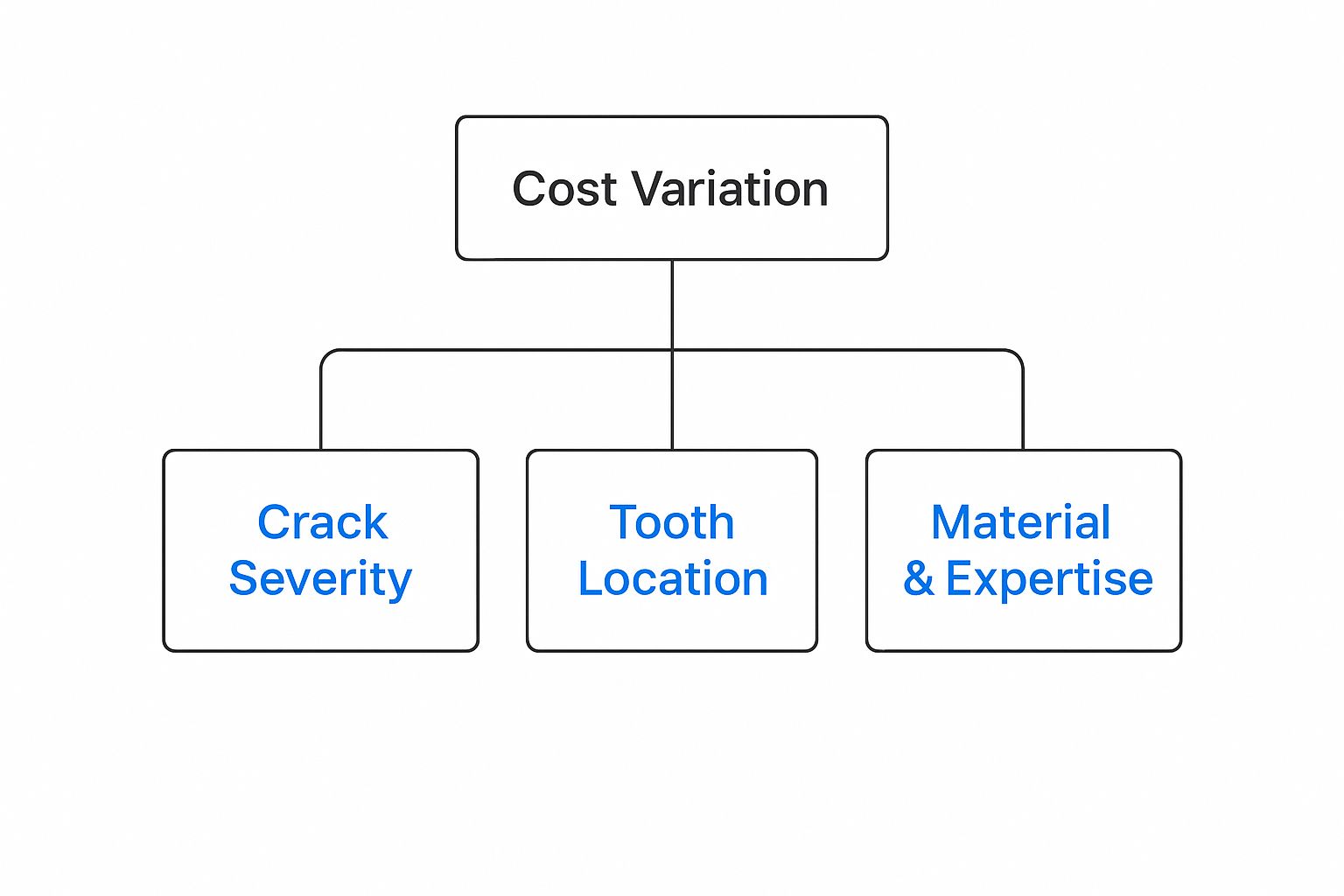
As you can see, it's a mix of how bad the crack is, which tooth is giving you trouble, and what materials are needed to fix it that all come together to determine your final bill.
Location and Complexity
It's not just what the problem is, but where it is. A crack on a front tooth is usually much easier for a dentist to get to and work on compared to a molar tucked away at the back of your mouth. Molars are not only harder to reach, but they also have a more complicated structure and do all the heavy lifting when you chew, so they often need a more heavy-duty solution like a full dental crown.
The materials chosen for the repair also play a big part in the cost. Think of it like choosing building supplies for a house—you have different options at different price points.
- Composite Resin: This is a tooth-coloured filling material that’s more affordable and great for smaller fixes like dental bonding.
- Porcelain or Ceramic: These are the premium options used for crowns and veneers. They look fantastic and are incredibly durable, but they come with a higher price.
Your dentist’s quote isn’t just for the materials. It also covers their time, the specialised skill involved, and the technology needed to get the job done right. A tricky molar repair simply requires more of all three.
Expertise and Geographic Location
Finally, the clinic's postcode and your dentist's experience can shift the price. Dental costs aren't uniform across Australia; where you live matters. Clinics in major urban centres tend to have higher running costs, and this can be reflected in their pricing. For example, a basic filling can range from AUD 148 in Queensland to AUD 183 in Tasmania. A simple tooth extraction might set you back AUD 185 in South Australia but could be as high as AUD 231 in the ACT. You can get a deeper look into how dental costs vary by region on stleonardsdental.com.au.
On top of that, a dentist who has completed advanced training in restorative procedures will understandably charge more for their specialised expertise. It’s this blend of factors that makes every quote a custom job, built just for you and your tooth.
Decoding Your Treatment Options and Prices
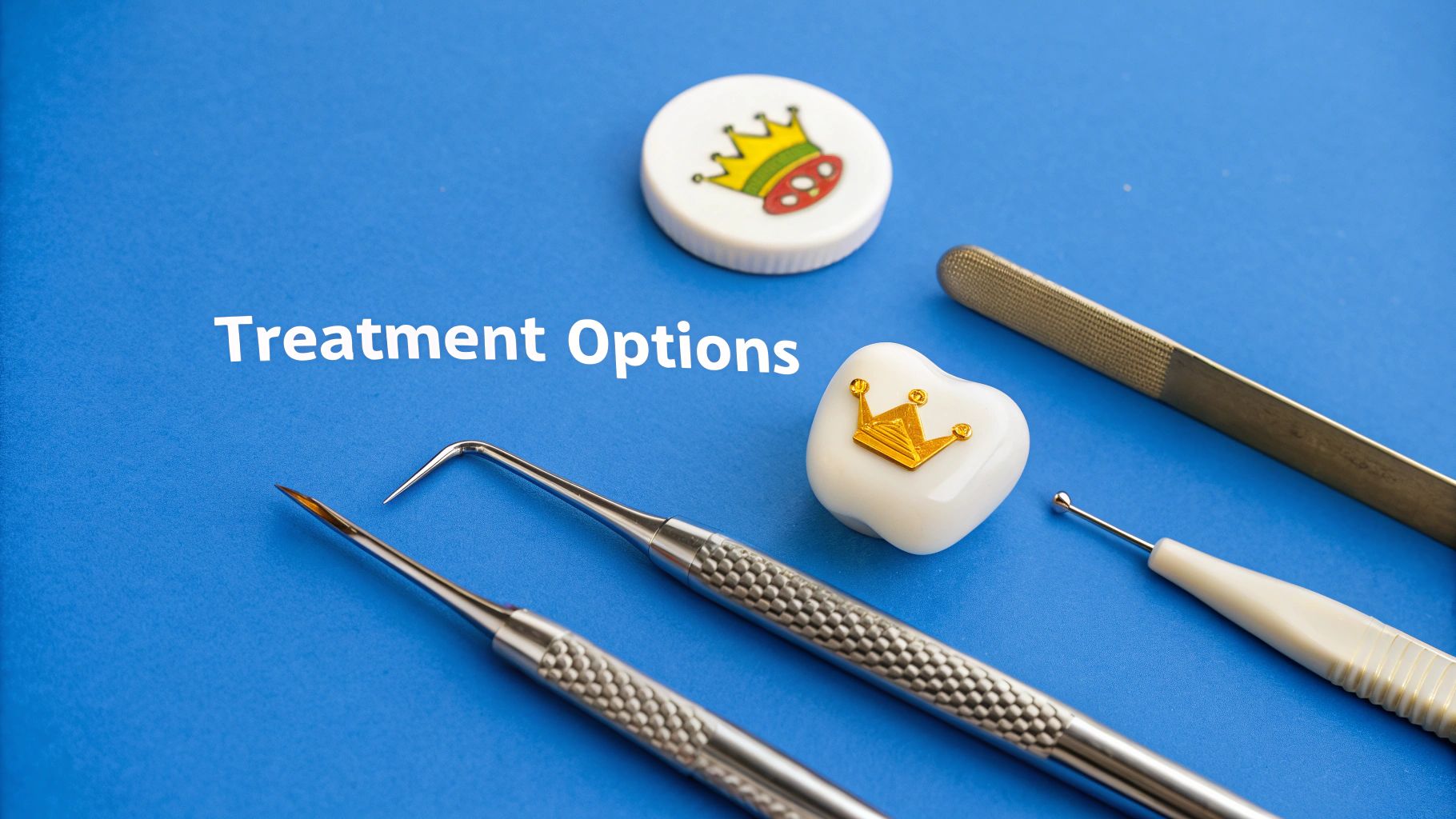
Understanding what your dentist recommends is the first step to feeling in control of the cracked tooth repair cost. Every procedure is tailored to a specific type of damage—you wouldn't use a sledgehammer to hang a picture frame, and the same logic applies here. We’ll walk through the most common fixes, from the simplest to the more complex.
Thinking about it this way helps connect the dots between your diagnosis, the recommended procedure, and what you can expect to see on the bill. It demystifies the whole process, making it far less daunting.
Dental Bonding for Minor Chips
Think of dental bonding as a quick touch-up, like using a bit of putty to fix a small chip in a wall. It’s a straightforward and budget-friendly solution for minor, cosmetic-level cracks or chips that have only nicked the tooth's outer enamel.
Your dentist simply applies a tooth-coloured composite resin to the damaged spot. They’ll mould it, harden it with a special light, and then polish it until it blends in perfectly with the rest of your tooth.
- Best For: Small, superficial chips, especially on front teeth.
- Average Cost: You can expect to pay between $200 and $600 per tooth in Australia.
Dental Crowns for Significant Damage
If bonding is a small patch, a dental crown is a full-blown protective helmet for your tooth. It’s the go-to solution when a crack is large enough to compromise the tooth's structure, leaving it vulnerable to breaking apart completely.
A crown is a custom-fitted cap that covers the entire visible part of the tooth. It restores its original shape, strength, and look, and it's typically made from tough materials like porcelain or ceramic that can handle the daily grind of chewing.
A crown provides 360-degree protection, basically holding the cracked pieces of the tooth together and stopping the crack from getting worse. This is absolutely vital for your back molars, which absorb the most bite force.
Root Canals for Deep Cracks
Now, if a crack runs deep enough to reach the tooth's soft inner core—the pulp—you’ve got a more serious situation on your hands. This pulp contains nerves and blood vessels, and once exposed, it can get infected and cause a world of pain.
A root canal treatment is basically a deep-clean from the inside out. Your dentist removes the infected pulp, disinfects the inner chamber, and then fills and seals the tooth. A protective crown is almost always placed on top afterwards to ensure the now-fragile tooth can still function.
Extraction and Replacement Options
In some tough cases, a crack is just too severe. It might extend deep below the gum line or split the tooth right down the middle. When a tooth is past the point of no return, an extraction is the only way forward to prevent further pain and infection.
But taking the tooth out is only half the story. It's crucial to think about a replacement to keep your bite aligned and stop neighbouring teeth from drifting out of place. This is where you start looking into options like dental implants. To get a clearer picture of the long-term investment, you can learn more about the cost of replacing multiple teeth with dental implants.
As you weigh your options, it's a good idea to see how different clinics handle patient care and costs. Checking out patient experiences at practices like 4squares Dentistry can give you valuable insight.
Comparing Cracked Tooth Repair Procedures
To make things even clearer, let's lay out the common treatments side-by-side. This table gives you a quick snapshot of what each procedure does, how long it's expected to last, and a ballpark figure for the cost.
| Procedure | Description | Average Lifespan | Estimated Cost (AUD) |
|---|---|---|---|
| Dental Bonding | A tooth-coloured resin is applied to fix minor chips and cosmetic cracks. | 3 to 10 years | $200 – $600 |
| Dental Crown | A custom cap that covers the entire tooth to restore strength and prevent further cracking. | 10 to 15+ years | $1,500 – $2,500 |
| Root Canal | The infected inner pulp is removed, and the tooth is cleaned and sealed. A crown is usually required afterwards. | 10+ years (with crown) | $2,000 – $3,500 (plus crown cost) |
| Extraction & Implant | The damaged tooth is removed and replaced with a dental implant and crown. | 20+ years (implant) | $4,000 – $7,000 |
Keep in mind these are just estimates. The right path for you will ultimately depend on your specific situation, so a thorough chat with your dentist is always the best next step.
The Hidden Costs of Delaying Treatment
Putting off a visit to the dentist for a cracked tooth can feel like you're saving a bit of cash right now, but it's a gamble that almost never pays off. That little crack isn't just a dental problem; it's a problem with a ticking clock. The longer you wait, the more complicated—and expensive—the fix becomes.
Think of it like a tiny leak in your roof. At first, you might just stick a bucket under it. But if you ignore it, that little drip eventually turns into serious water damage, mould, and a massive repair bill. A cracked tooth works in exactly the same way.
The Cost Escalation Ladder
Delaying treatment puts you on a predictable "cost escalation ladder." A simple, affordable fix can quickly climb into a major, unexpected expense. The longer you wait, the higher you're forced to climb.
Here’s a breakdown of how things usually go from bad to worse:
-
Stage 1: Minor Crack (The Low-Cost Fix): A small, surface-level crack is often a quick fix. Your dentist might just need to apply some dental bonding to seal it up, which could cost less than $500. At this point, the problem is contained and the solution is simple.
-
Stage 2: Worsening Crack and Infection (The Mid-Range Repair): Leave that crack alone, and it will deepen. This gives bacteria a direct path into the tooth's sensitive inner pulp, leading to infection and a world of pain. Now you're looking at a root canal to clear out the infection and a crown to protect what's left of the tooth. Suddenly, the bill has jumped to $3,000 or more.
-
Stage 3: Severe Fracture (The Major Investment): If the crack spreads too far, the tooth can split in a way that’s impossible to repair. The only option left is to pull it out. This solves one problem but creates another: a gap in your smile. The best way to replace it is with a dental implant and crown, but this is also the most expensive outcome, potentially setting you back $5,000+.
More Than Just Money
The financial hit isn't the only cost of waiting. You also have to deal with the chronic pain, the sensitivity every time you eat or drink, and the very real risk of the infection spreading. An abscessed tooth is no joke—if that infection gets into your bloodstream, it can cause serious health issues.
Early intervention isn't just another bill; it's a strategic investment. By dealing with a cracked tooth straight away, you're not just saving a significant amount of money down the track. You're also protecting your overall health from much more serious complications.
Navigating Insurance and Payment Options

Let's be honest, staring down a hefty dental bill can be just as nerve-wracking as the procedure itself. The high cracked tooth repair cost is a real worry for many Australians, but there are plenty of ways to make essential dental care more affordable. A little bit of planning, whether it’s through private health insurance, government schemes, or clinic payment plans, can make a world of difference.
It's no secret that dental care often comes with a significant personal expense. In fact, total spending on dental services hit around AUD 8.7 billion in a single year, with Aussies personally footing the bill for about 58% of that. These numbers really highlight why it’s so crucial to check out every financial avenue available to you.
Unpacking Private Health Insurance
For most people with private health cover, your policy is the first place you'll turn. If you have an ‘extras’ policy, you’ll almost certainly have some level of cover for fixing a cracked tooth. But the devil is in the detail, so it pays to know exactly what your plan includes.
Here are the key things to check with your insurer:
- Waiting Periods: Most policies have waiting periods, often from 2 to 12 months, before you can claim for major dental work like crowns or root canals.
- Annual Limits: Your policy will have a cap on how much you can claim for dental each year. A big procedure could easily eat up that limit.
- Percentage Covered: Insurance almost never covers 100% of the fee. It usually covers a set percentage, leaving you with a "gap" payment to cover yourself.
Pro Tip: Always ask your dentist for a detailed treatment plan with all the item numbers before you start. You can then give these to your health fund to get a precise quote on your out-of-pocket costs, so there are no nasty surprises later.
Exploring Alternative Financial Support
What if you don't have private health insurance, or your policy leaves a massive gap? Don't stress. There are other options out there to help you manage the cost of repairing that tooth. Many clinics and government bodies understand that people need accessible dental care and have systems in place to help out.
One of the most straightforward solutions is an in-clinic payment plan. These let you break down the total cost of your treatment into smaller, more manageable instalments spread over several weeks or months. It's a fantastic way to get the care you need right away without completely wrecking your budget. You can learn more by exploring our dental payment plans which we've designed to make treatment affordable for everyone.
Government Schemes and Superannuation
Beyond what your local clinic offers, it's also worth seeing if you’re eligible for any government assistance. A few programs can provide some serious financial relief.
- Public Dental Vouchers: State-based schemes sometimes offer vouchers for public dental services if you hold a concession card.
- Medicare Child Dental Benefits Schedule (CDBS): If you have kids, this scheme provides benefits for basic dental care for eligible children aged 0-17.
- Department of Veterans' Affairs (DVA): DVA cardholders are often entitled to have their dental costs covered.
Finally, for very extensive or severe dental issues, you might be able to apply for the early release of your superannuation on compassionate grounds. It involves a formal application process, but it can be a genuine lifeline when you need to fund a major, medically necessary procedure.
Common Questions About Cracked Tooth Repair
When you're dealing with a cracked tooth, it's natural for a lot of questions to pop into your head, especially about the final cost. Knowing the specifics of your situation is the best way to feel confident about your treatment plan. Here, we'll walk through some of the most common questions people have about the cracked tooth repair cost and what the process actually involves.
Getting straightforward answers helps solidify what you've learned and gets you ready for a good chat with your dentist. Let’s tackle these common concerns so you have the full picture.
Can a Cracked Tooth Heal on Its Own?
I hear this a lot, and it’s a hopeful thought, but the answer is a definite no. Unlike a broken bone that can mend itself, a tooth just doesn't have that ability. The main materials of your tooth, enamel and dentin, can't regenerate once they've been fractured.
Leaving a crack is a gamble because it basically leaves an open invitation for bacteria. This can lead to a painful infection deep inside the tooth, which often means more complicated and expensive procedures down the track. With the daily pressure of chewing, the crack will almost certainly get worse, which is why getting it seen to quickly is always the best (and cheapest) option in the long run.
A crack in a tooth is like a crack in a windscreen—it won't fix itself and is guaranteed to spread if you ignore it. Acting quickly prevents a small problem from turning into a major one.
Is an Emergency Dentist More Expensive?
Yes, as a general rule, you should expect to pay more for emergency or after-hours dental care. Think of it like calling out a plumber on a public holiday—you're paying a premium for their immediate availability outside of normal business hours. While the fee for the procedure itself (like a filling or bonding) might not change, the total bill will likely be higher.
Emergency clinics often have additional fees, like an "after-hours call-out fee" or an "emergency consultation charge." Of course, if you're in severe pain or have a deep fracture, paying a bit extra is often well worth it to get immediate relief and stop the problem from becoming much worse.
How Can I Get an Accurate Quote for My Repair?
The only way to get a truly accurate quote is to have a dentist take a proper look. They'll need to examine the tooth, often with the help of X-rays, to see exactly how extensive the damage is and how deep the crack runs.
From there, they can put together a detailed treatment plan. This plan should break down every recommended procedure and its cost. Don't ever hesitate to ask for this in writing. For bigger jobs like a crown or root canal, it's also completely reasonable to get a second opinion from another dentist to compare their approach and costs. Speaking of which, if a root canal is on the cards, you might find it useful to read up on the top questions patients ask about root canal treatment to know what to expect.
Does Medicare Cover Cracked Tooth Repair for Adults?
For most adults in Australia, Medicare unfortunately doesn't cover dental services. That means common procedures needed for a cracked tooth, such as fillings, crowns, or root canals, aren't included. Dental care is mostly paid for either through private health insurance or directly out-of-pocket.
There are a few exceptions for adults with very specific medical conditions or those with certain concession cards, who might be able to access public dental services. However, these services typically have very long waiting lists. For the average adult with a cracked tooth, Medicare won't be an option for covering the repair costs.
At Delacombe Family Dental, we believe in clear communication and transparent pricing to help you make informed decisions about your dental health. If you're concerned about a cracked tooth, don't wait for it to get worse. Book a consultation with our experienced Ballarat dentists today and get a clear, personalised plan to restore your smile.
Article created using Outrank
